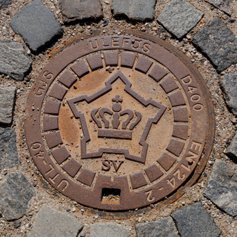Understanding Drug Use in Copenhagen: Insights from Wastewater Analysis

Scientists have a unique way of figuring out which drugs people in a city are using: by examining the city's wastewater. It's like a city-wide drug urine test. The European Monitoring Centre for Drugs and Drug Addiction (EMCDDA) did this for 100 European cities, and Copenhagen was one of them. Here's what they discovered about Copenhagen:
What the Numbers of the Copenhagen Wastewater Analysis Tell Us
Cocaine

- 2022 Average: For every 1,000 people in Copenhagen, about 647 milligrams of cocaine residues were found in the wastewater every day.
- What’s Changed?: People in Copenhagen used about 21% more cocaine in 2022 compared to 2021.
- European Ranking: Out of 100 cities, Copenhagen ranks 13th for cocaine use.
- In Simple Terms: Cocaine use has gone up since last year, and Copenhagen is in the middle range among major European cities.
MDMA (Ecstasy)
- 2022 Average: Every day, for every 1,000 people, there were about 29 milligrams of MDMA residues.
- What’s Changed?: There was a 15.6% drop in MDMA use from 2021 to 2022.
- European Ranking: Out of 100 cities, Copenhagen is 16th for MDMA use.
- In Simple Terms: Fewer people are using MDMA now than last year, and Copenhagen is towards the lower end of the list in Europe.
Amphetamine
- 2022 Average: Daily, for every 1,000 people, around 71 milligrams of amphetamine residues were detected.
- What’s Changed?: There’s been a 23% decrease in amphetamine use from 2021.
- European Ranking: Copenhagen did not make it to the top 20 out of 100 cities for amphetamine use.
- In Simple Terms: Amphetamine use has dropped, and Copenhagen is not among the highest users in Europe.
Methamphetamine
- 2022 Average: Each day, for every 1,000 people, about 25 milligrams of methamphetamine residues were found.
- What’s Changed?: A big drop of 41.3% from 2021.
- European Ranking: Copenhagen is not in the top 20 out of 100 cities for methamphetamine use.
- In Simple Terms: Methamphetamine use has significantly decreased, and Copenhagen isn’t among the top cities in Europe for its use.
Ketamine
- 2022 Average: Daily, for every 1,000 people, there were around 17 milligrams of ketamine residues.
- European Ranking: Out of 100 cities, Copenhagen holds the impressive 4th position for ketamine use.
- In Simple Terms: Ketamine is quite popular in Copenhagen, placing it high up in the European rankings.
What Does This All Mean?
The data from the wastewater provides more than just numbers; it paints a picture of the challenges Copenhagen faces in terms of drug use. Knowing where the city stands in comparison to other European cities gives valuable insights into the magnitude of the issue.
Prevention Efforts

Understanding the popularity of certain drugs can guide prevention efforts. For instance, with cocaine use on the rise and the city ranking 13th in Europe, there’s a clear need for targeted awareness campaigns. These campaigns can focus on the risks associated with cocaine use, its potential legal consequences, and its impact on mental and physical health. Schools, colleges, and community centers can host educational sessions, bringing in experts to discuss the dangers of drug use and the benefits of a drug-free lifestyle.
Rehabilitation Efforts
The data also underscores the importance of robust rehabilitation programs. For those already struggling with addiction, knowing that they're not alone can be a powerful motivator to seek help. The city can invest in expanding rehabilitation centers, offering both in-patient and outpatient programs tailored to the specific needs of individuals. Support groups can play a crucial role, providing a safe space for individuals to share their experiences and challenges, and learn from others who have walked the same path.
Moreover, the high ranking of Copenhagen in ketamine use (4th in Europe) suggests that there might be a subset of the population experimenting with or regularly using this drug. Specialized intervention programs can be developed to address this, focusing on the unique challenges posed by ketamine use.
Community Engagement
Engaging the community is key. Local leaders, influencers, and celebrities can be roped in to champion the cause, making drug prevention and rehabilitation a community-driven effort. Grassroots movements, led by community members, can also play a pivotal role in changing perceptions and reducing the stigma associated with seeking help for addiction.
Conclusion
The wastewater analysis serves as a mirror, reflecting the drug consumption patterns of Copenhagen’s residents. While the findings might be concerning, they also offer an opportunity. An opportunity to educate, to support, and to heal. By ramping up prevention and rehabilitation efforts and engaging the community, Copenhagen can turn the tide, ensuring a healthier and safer future for its residents.
Acknowledgment:
We’d like to thank the European Monitoring Centre for Drugs and Drug Addiction (EMCDDA) and the Sewage analysis CORe group Europe (SCORE) for their significant contribution to this study. Their efforts in data collection and analysis have enhanced our understanding of drug consumption patterns across Europe. Their commitment to transparency and excellence has supported our research. We appreciate their collaboration and expertise.


